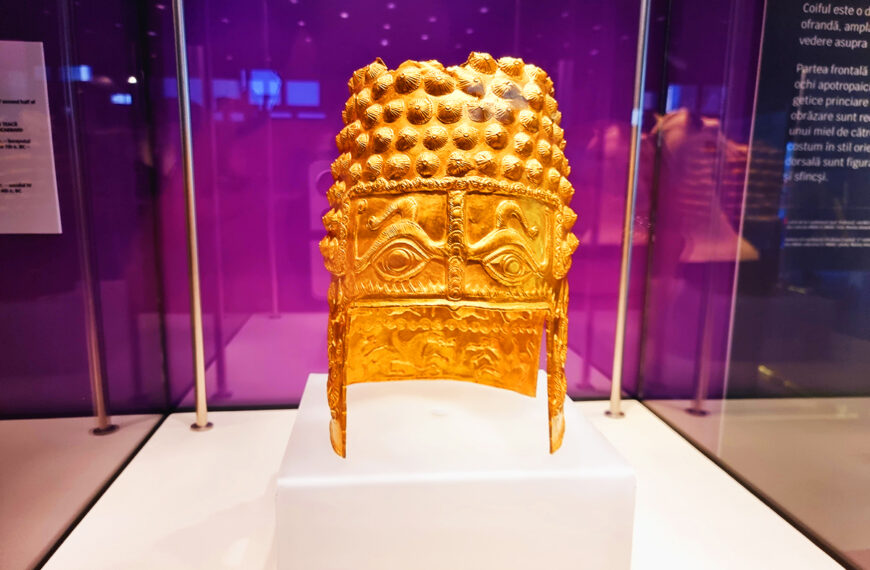- Tourist Information
- Map
- Why are the Dacian Bracelets so famous?
- The Legend of the Dacian Bracelets
- Treasure Hunters and the Flames
Tourist Information
| Type | Museum pieces, Ancient artifacts |
| Datare | 2nd Century BC – First Century BC |
| Material | Gold. The concentration of gold varies between 78% and 92%, that of silver between 6% and 20%, and that of copper, between 7% and 15% |
| Visiting hours | Wednesday – Sunday – 10 AM – 6 PM Monday, Tuesday – Closed |
| Location | Romanian History Museum, Calea Victoriei 12, Bucharest |
Map
Why are the Dacian Bracelets so famous?
The Dacian bracelets are highly coveted, enigmatic, disputed, and invaluable treasures that are over 2,000 years old.
Gold spiral Dacian bracelets have gone through many events and surrounded the world, both physically and in the stories about them. Stolen by treasure hunters, sold on the black market to various collectors, and finally found by the Romanian authorities and brought back to the country. It is assumed that there were 24 Dacian bracelets, of which only 13 were found.
The Dacian gold bracelets were found near Sarmisegetuza Regia, the last capital of the Dacian Kingdom.
The Romanian state made efforts to recover them and bring them back to the country.
Each bracelet weighs between 682 grams and 1.2 kg. Six of them weigh over 1 kg each.
The 13 bracelets are now on display at the National Museum of History of Romania.
The Legend of the Dacian Bracelets
Legend has it that Decebal, the king of the Dacians, had diverted the course of the river and dug a cave where he hid the Dacian treasure. Biciclis betrayed Decebal and revealed where gold and silver were hidden to Traian, the emperor of Rome.
Although the Roman emperor, Traian, succeeded in finding much of the treasure, it is said that much remains beneath the river.
Treasure Hunters and the Flames
It is said that the Orastiei Mountains are full of Dacian gold and silver. Treasure hunters are still digging in some places hoping to find gold and silver.
Legend has it that on Christmas Eve and Sanziene night, above the places where the gold is hidden, live flames burn that can be seen from far away.
In traditional Romanian and Balkan tales, there are references to “live flames“, also known as “blue flames” or “Zamolxis flames“. These fires were considered sacred by the Dacians and were believed to signify the presence of gods or gold in certain locations. According to legend, the Dacians performed rituals around these fires, and their priests and scholars utilized them to interpret the will of the gods and foretell future events.























